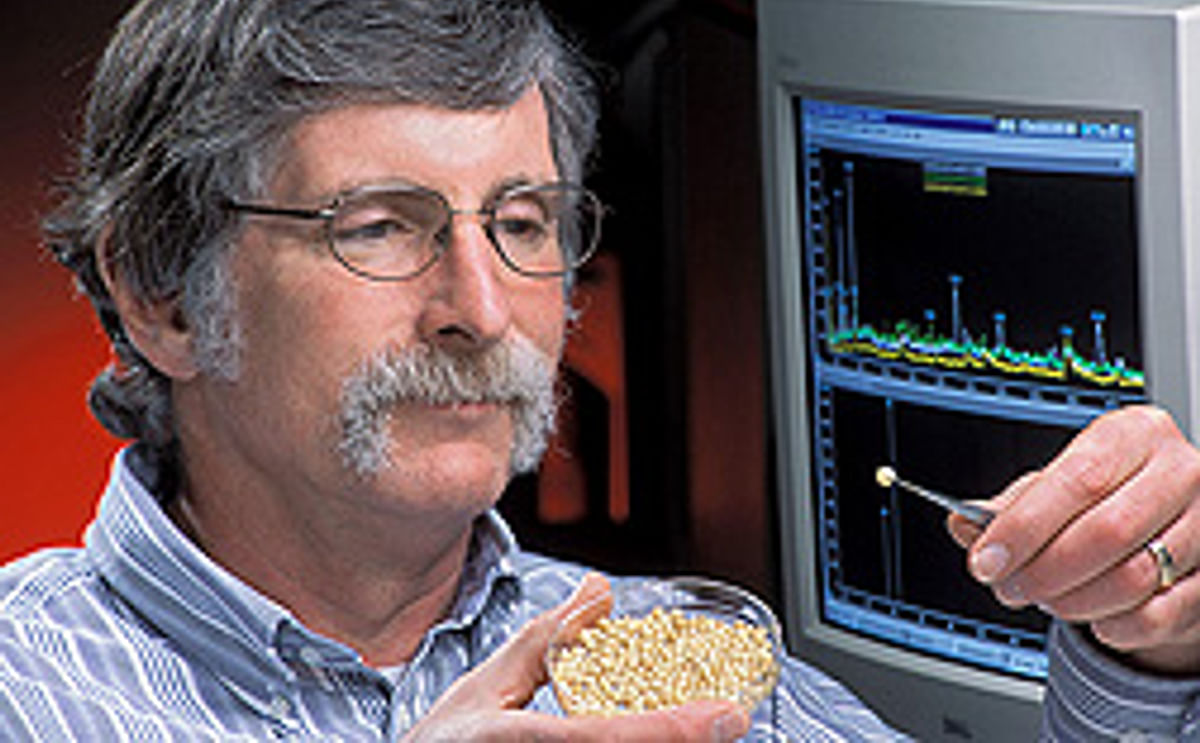Agricultural Research Service (ARS) scientists in North Dakota are evaluating the storage properties of promising new potato varieties that could greatly improve potato quality for growers throughout the United States.
Seventy percent of all potatoes in the United States are processed into chips, french fries and dehydrated potato flakes.
Maintaining adequate potato storage quality for processing—in some cases, up to 10 months—is vital to potato producers and processors.
Jeff Suttle, research leader at the ARS Sugarbeet and Potato Research Unit in Fargo, N.D., and food technologist Marty Glynn at Fargo's work site in East Grand Forks are working with the Northern Plains Potato Growers Association and public potato breeding programs throughout the United States to evaluate the storage properties of new potato varieties.
Their evaluations of the new varieties over the past year have led to the development of two named cultivars, "Dakota Crisp"and "Dakota Diamond,"which fare well even after nine months of storage.
Wound-healing and sprout control are both major issues for potato storage managers. Potatoes are sometimes damaged during harvest and must heal in order to prevent infection by other pathogens. The internal processes that control wound-healing are being determined in studies by ARS chemist Apple-converted-space Ed Lulai in Fargo. Lulai has identified hormonal signals that stimulate the healing process.
When potatoes are harvested, they're dormant and don't sprout. During storage, dormancy ends and sprout growth commences. Sprouting results in numerous biochemical changes, which are detrimental to the nutritional and processing qualities of potatoes. Postharvest sprouting is typically controlled during storage with chemicals that inhibit the process.
The long-term goal of Suttle's program is to find less costly, nonchemical solutions to the problem by identifying the genetic cause for these early-sprouting tubers. The researchers have identified internal mechanisms that signal sprouts to grow, and they are currently isolating the genes responsible for these signals.
- News
- Potato Supply chain
- Potato varieties with...
Potato varieties with improved storage capabilities: ARS research

May 06, 2010
Source
ARS News
Like to receive news like this by email? Join and Subscribe!
Join Our Telegram Channel for regular updates!
Related Topics:
Highlighted Company
Related News

December 22, 2024
Mooij Agro unveils innovative crop storage solutions at Potato Expo 2025

December 20, 2024
EU-Mercosur Free Trade Agreement: Reducing Tariffs and Impact on Agricultural Trade

December 19, 2024
Tajikistan has harvested a record potato crop, but potato price stays high.
Latest News
Sponsored Content
Sponsored Content
Sponsored Content
Sponsored Content
Where
Sponsored Content







